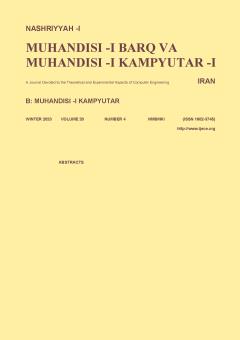-
-
List of Articles
-
Open Access Article
1 - Priority-Based Task Scheduling Using Fuzzy System in Mobile Edge Computing
Entesar Hosseini Mohsen Nickray SH. GH. -
Open Access Article
2 - Multi-Label Feature Selection Using a Hybrid Approach Based on the Particle Swarm Optimization Algorithm
َAzar Rafiei Parham Moradi Abdolbaghi Ghaderzadeh -
Open Access Article
3 - A New Measure for Partitioning of Block-Centric Graph Processing Systems
Masoud Sagharichian Morteza Alipour Langouri -
Open Access Article
4 - Load Balancing in Fog Nodes using Reinforcement Learning Algorithm
niloofar tahmasebi pouya Mehdi-Agha Sarram -
Open Access Article
5 - Improvement of the Sharpness and Brightness of Dim Images Using the Retinax Approach and Nonlinear Conversion
maryam ghasemi Morteza Khademi Abbas Ebrahimi moghadam -
Open Access Article
6 - Spatio-Temporal Prediction of Vegetation Dynamics Based on Remote Sensing Data Using Deep Learning
Elham Zangeneh H. Mashayekhi Saeed Gharachelo -
Open Access Article
7 - High Level Synthesis of Decimal Arithmetic on Coarse Grain Reconfigurable Architectures
Samaneh Emami -
Open Access Article
8 - Increasing Image Quality in Image Steganography Using Genetic Algorithm and Reversible Mapping
Saeed TorabiTorbati مرتضی خادمی عباس ابراهیمی مقدم
-
The rights to this website are owned by the Raimag Press Management System.
Copyright © 2017-2025







